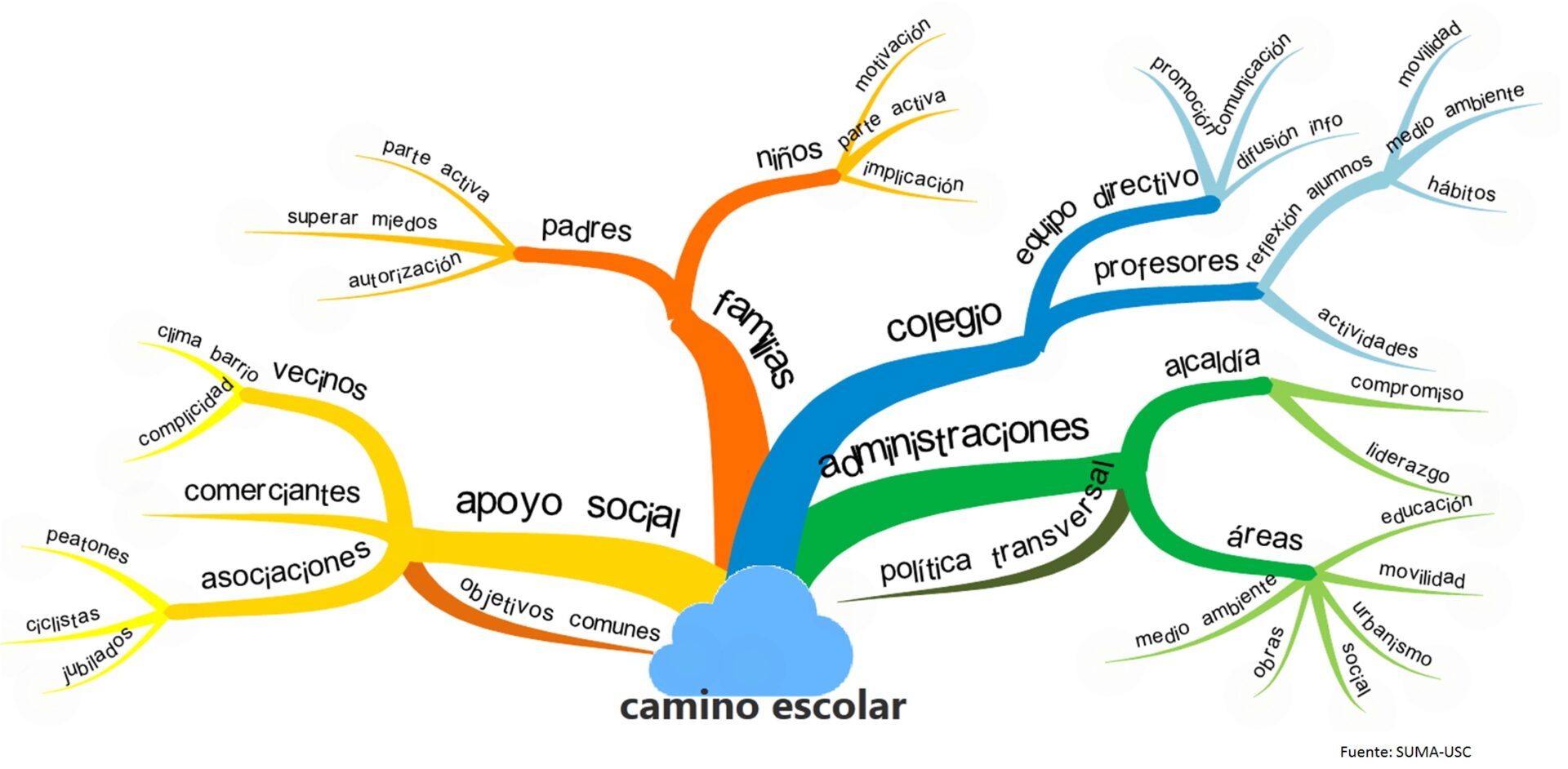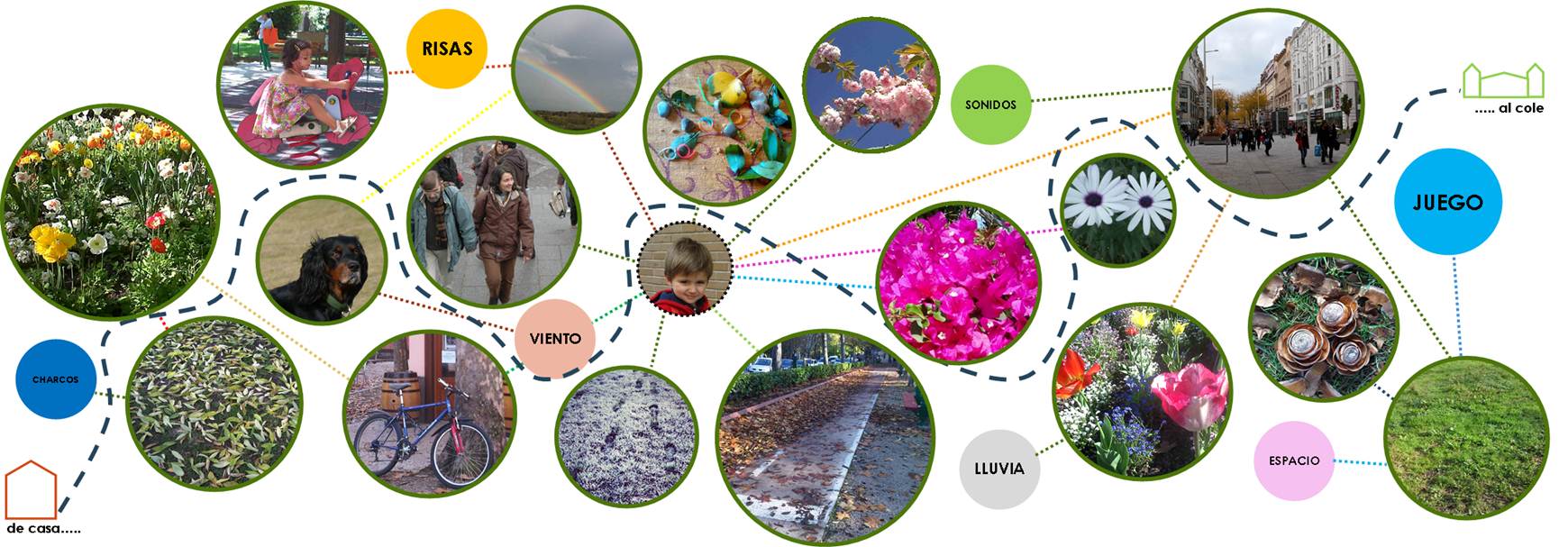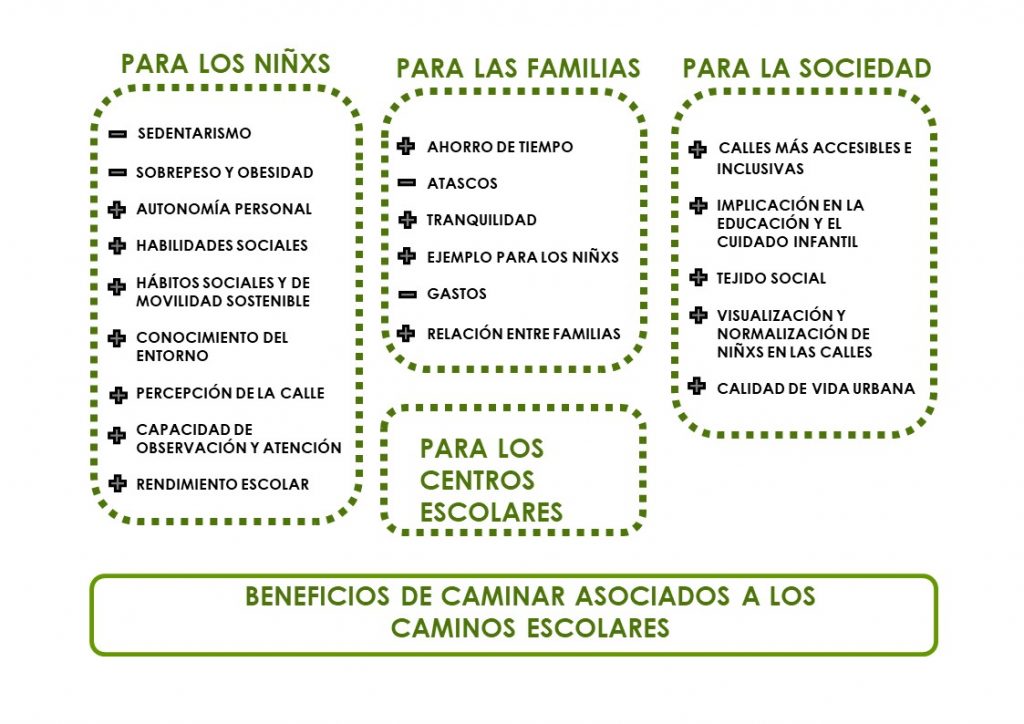Following the lines established by the Sustainable Mobility Pact and the Cyclability Plan, the Urban Ecology and Sustainable Mobility Area of Pamplona City Council wants to promote pedestrian movements, enabling safe and pleasant itineraries, as elements that enhance the transformation of neighborhoods towards more pleasant environments. Recovering the predominat role of streets and pedestrian sidewalks and turning them into spaces that usually host the daily commuting of girls and boys from and to their schools.
In this regard, the projects of school routes are initiatives aimed at children in order to ensure their safety and autonomy while moving throught the streets and regain use and enjoyment of public space. At the same time, these routes cause an impact on both childcaring management and time used by families.
This type of initiative promotes sustainable mobility habits in the access to schools and the recovery of the use of public space by children, facilitating their mobility to schools with safety and autonomy. In this way, adult accompaniment (usually by car) ceases to be a private issue for families and becomes a shared and community issue, helping mothers and fathers to reconcile their family and work life.
Reducing the number of vehicles arriving at school also means reducing the danger and environmental problems generated by this type of transport. In addition, these experiences promote healthy habits among the younger population, reducing the risk of childhood obesity.
In line with the work of Walkability Analysis developed in the Iturrama neighborhood, the School Road Project for the Ikastola Amaiur and the Claret Larraona School is proposed. The project was presented within the Mobility Week of Pamplona.
Currently, work is being done with schools to prepare a survey to study the mobility habits of families.
With this starting data, the routes from the homes to the centers will be studied following the network of sidewalks and crossings elaborated in the neighborhood’s through the Walkability Analysis project. In its application to a School Path, in the weighting of the different factors that influence walkability, the way in which some aspects affect especially children, both positively and negatively, is taken into account. For example, safety takes on greater importance, but also those elements that can make the journey more attractive to them, such as trees, flowers, a greater width of sidewalks …
There will also be a participatory workshop with families to diagnose the quality of school routes and select possible recommendations for improvement.
The delivery of the full document is scheduled in December.



